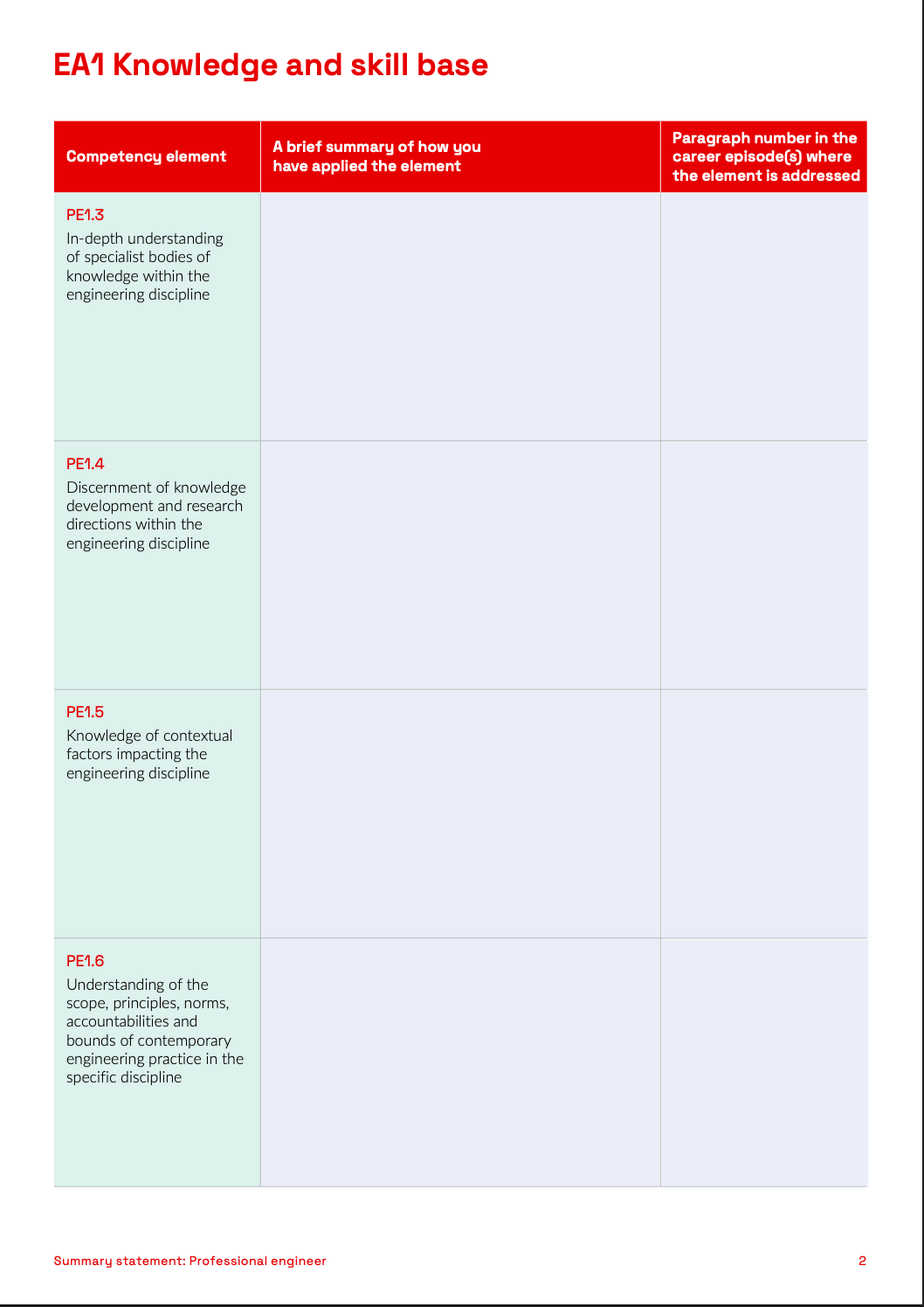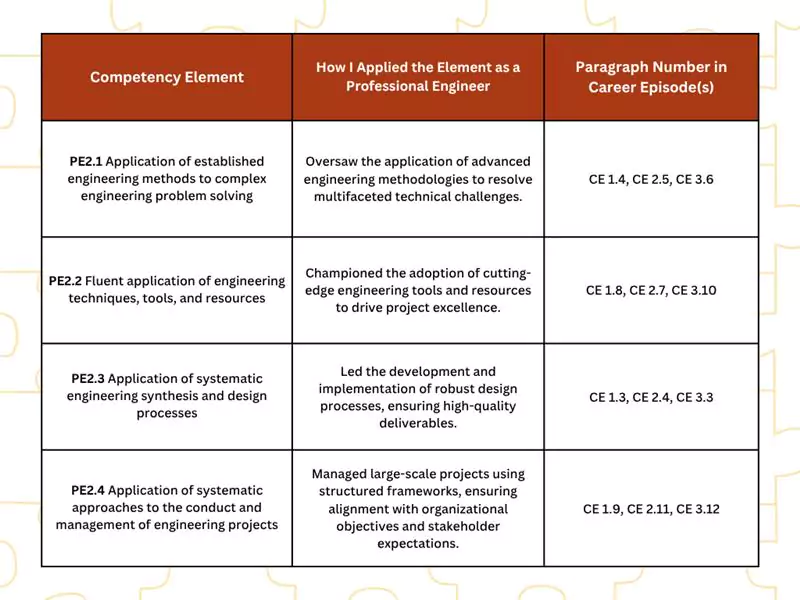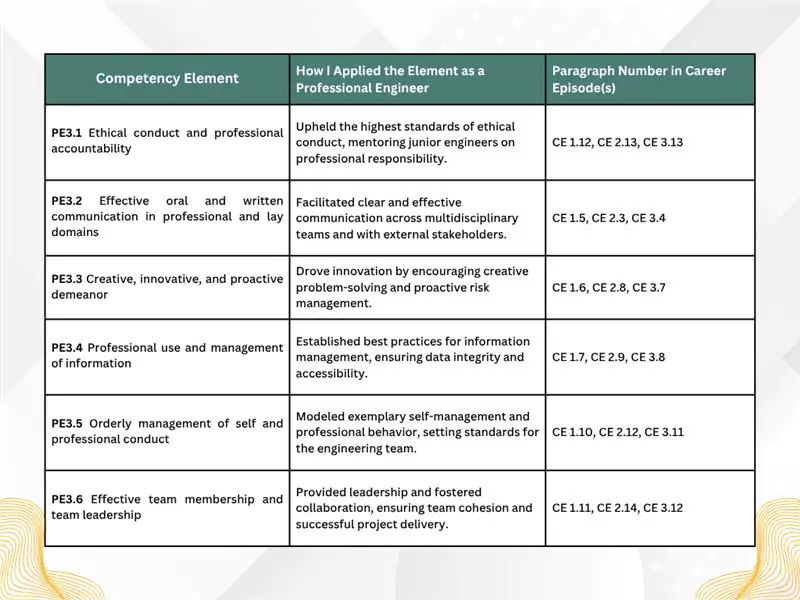Your Summary Statement for Engineers Australia is the master key to your Competency Demonstration Report (CDR). It’s more than a simple summary; it’s a technical blueprint that maps your career evidence directly to the specific competencies EA demands. Each point on this blueprint must link precisely to the proof within your Career Episodes, demonstrating your suitability for a positive skills assessment.
But beyond its structure, the Summary Statement is your professional story. It’s your opportunity to translate real-world projects into the measurable, recognised skills that assessors seek. It’s not enough to say you have the experience; you must prove it. This document is where your career stops being a history and starts speaking the language Engineers Australia understands.
This guide will equip you with the essential strategies to write a winning Summary Statement for Engineering Technologist, ensuring every word works towards securing a successful outcome.
Table of Contents
ToggleWhat Is the Format or Structure of a Summary Statement for Engineers Australia?
Engineers Australia provides a detailed summary statement template as a format reference for professional engineers.





You must download the specific Summary Statement template for Professional Engineers from the official Engineers Australia website. You will find this on Engineers Australia’s official website.
Guide for Writing a Summary Statement for My CDR
A strong Summary Statement is crucial for making a positive first impression. This document introduces your engineering competencies to the assessors, so it must be written with clarity, confidence, and a logical structure to ensure your message is easily understood.
To ensure its effectiveness, cross-reference each competency element. During cross-referencing, link each point to the relevant paragraphs in your Career Episodes. Number every paragraph in those episodes. This helps assessors easily track your supporting evidence.
Engineers Australia divides competencies into three main groups-
Knowledge and Skill Base
Use this part to show your technical strengths. Include engineering theories and problem-solving knowledge here. Cover at least two indicators from this section. Choose examples that reflect your deep understanding.
Engineering Application Ability
Here, focus on applying skills in real situations. Describe how you used your knowledge in practical work. Include at least three indicators with real examples. Make sure each instance shows your hands-on ability.
Professional and Personal Attributes
This area highlights ethics, communication, and leadership qualities. Explain your role in team projects and decision-making. Demonstrate how you maintained professionalism in all tasks. This reflects your growth both personally and professionally.
Each competency aspect lists several possible indicators. You are not required to include each one. Choose only the most relevant to your experience.
Write only one Summary Statement for all episodes. Link it thoughtfully to each career episode provided.
With precision and care, your report will stand out. Be confident and follow Engineers Australia’s official guidelines.
Also, just one Summary Statement for Professional Engineer is required overall. It must cover all three of your career episodes. Make sure it links back to each episode.
How Long Should the Summary Statement Be in the CDR Report?
Your Summary Statement in the CDR should be precise. It is typically around 1500 words in total.
However, exceeding one page is acceptable if necessary. A strong Summary Statement may need extra space. Focus on making your points clear and complete. What matters most is the quality and clarity.
Lastly, your Summary Statement must follow a three-column layout:
- Competency Element
- Brief Description of Your Application
- Paragraph Number in Career Episode(s)
It is best to use a simple table layout. List each element with its related episode reference. This format keeps your content clear and organised.
The statement should capture your entire engineering journey. It must reflect skills, knowledge, and problem-solving ability. Also include leadership, ethics, and communication strengths where relevant.
Do not repeat your career episode content directly. Instead, analyse your actions to highlight core competencies. This shows how your experience fits each required standard.
If you need further clarification, refer to the sample summaries below. They offer insights into format and presentation style. These samples show how to structure and connect points. The provided CDR Summary Statement examples also demonstrate how to meet assessment expectations.
Sample Summary Statement for Engineers
The goal of the Professional Engineer Summary Statement sample is simple. It helps you understand the document’s structure and key components. This includes the format, content, and how each part should align with Engineers Australia’s standards.
PE1: Knowledge and Skill Base

PE2: Engineering Application Ability

PE3: Professional and Personal Attributes

Can I Use Summary Statements for Reference When Writing My Own?
Yes, you can use these samples as a guide for your own Engineers Australia Summary Statement. However, use the CDR summary statement sample as a reference, not a rulebook.
You do not need to cover every metric listed. Focus only on the elements relevant to your episodes. One well-crafted summary statement for the Engineers Australia CDR Report is enough. It should link all three career episodes effectively.
Keep it clear, focused, and aligned with competency needs for skill assessment success. Also, read our guide on How to Write an ACS RPL Reference Letter.
What are the Common Mistakes to Avoid in a CDR Summary Statement?
The following are the mistakes to avoid to keep your summary statement aligned with CDR report guidelines:
| Mistakes | Pitfalls | |
| Incomplete or Generic Overview |
| |
| Not Directly Addressing the Competency Units and Elements |
| |
| Lack of Evidence for Achievement |
| |
| Poor Work Ethics and Communication |
| |
| Not tailoring it for the assessment process. |
| |
| Confusing Roles: Engineering Associate vs. Professional Engineer |
| |
| Insufficient Proofreading |
| |
| Not Understanding the Competency |
| |
| Plagiarism |
|
Tip: Do I Need Professional Help to Write My Summary Statement for Engineers Australia?
Many engineers find the CDR writing process difficult, and writing the Summary Statement is often the hardest part. The biggest challenge is mapping skills correctly and clearly. Errors in presentation can lead to CDR rejection. Also, it is important to understand why you should align the summary statement with ANZSCO Codes. This delay can affect your migration and career plans.
Summary Statement Writing services like TheCDRWriter offer targeted support for this exact issue. Their specialised Summary Statement Writing services are highly effective.
When writing your summary statement for the assessment process, experts ensure your skills align with CDR report guidelines and match the required competency units. They help you write specific examples, highlight your occupational category, and highlight achievements in a professional and structured format.
They also carefully proofread to achieve perfection. Also, if you are going for the ACS skill assessment, our blog on Key Reasons For RPL Rejection might be helpful to stay aware.
Choose Us for a Flawless Summary Statement.
TheCDRWriter team includes experienced engineers and CDR professionals. They have prepared successful reports across many disciplines. Their writers understand the detailed expectations of Engineers Australia. Each submission is original, accurate, and ready for review.
If you want a strong Summary Statement that stands out, rely on TheCDRWriter for expert-level writing support. Contact TheCDRWriter today to secure your successful assessment. We can also help you with CDR review services.
The impact of effective CPD is reflected in how engineers progress in their careers and maintain high professional standards. It supports ongoing learning, enhances technical skills, and builds confidence to adapt in a fast-changing industry. For those pursuing skilled migration, meeting Engineers Australia’s skill standards can greatly improve assessment outcomes. Overall, the impact of effective professional learning goes beyond individual growth—it drives innovation, strengthens workforce quality, and helps engineers thrive in Australia’s competitive engineering landscape.
Want To See My Profile — Click Here Iqbal
- Career Episode Writing Trends and How They Benefit You - October 30, 2025
- Align Career Episodes with Desired Occupation for Engineers Australia - October 27, 2025
- Top Challenges in Writing Career Episodes [How Engineers Can Fix Them] - October 21, 2025

